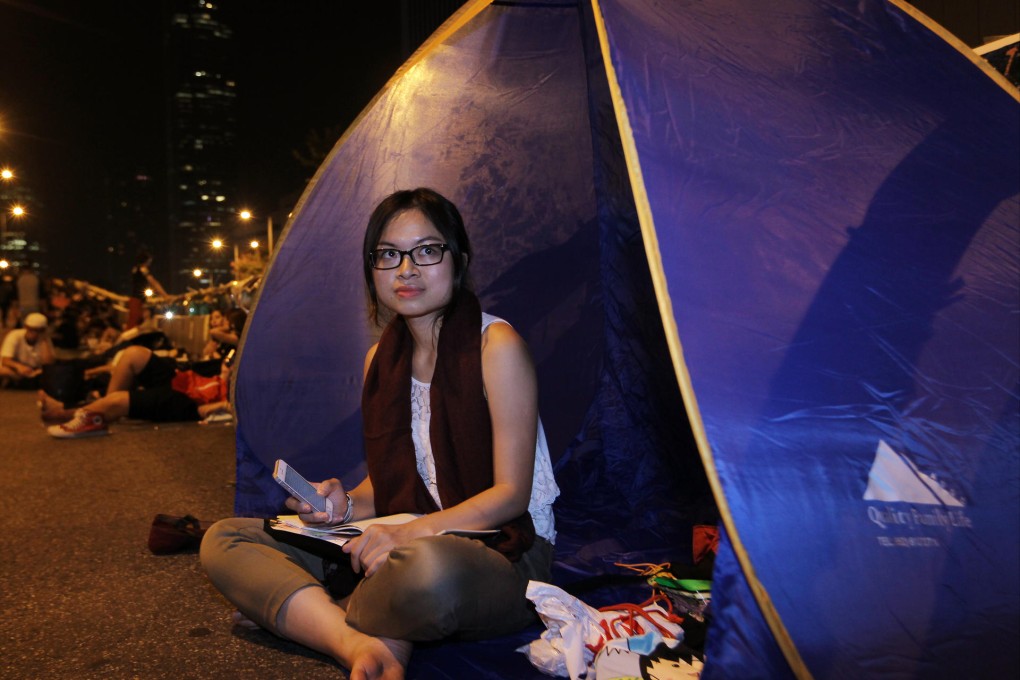Living on the front line: How an occupation became a community
After covering Occupy Central in Admiralty from the beginning, reporter Jeffie Lam decided to spend a night under the canvas to see what motivates protesters

Taking off my eye mask, I find myself in the middle of Harcourt Road under a rising sun at the start of the 14th day of the occupation. People jog and bike between the colourful tents, while others dish out free newspapers and breakfast.
I'm surprised to find it's already 7am as I check my phone after my first night camping outside the government headquarters. My back is a bit sore but, unexpectedly, I managed some quality sleep.
About 10 students are revising their schoolwork at a "study corner" underneath the Admiralty Centre flyover. At the other end of the road, a group of athletes are getting ready for an "Umbrella Marathon" from Central to Wan Chai on roads usually filled with traffic.
I had spent every day in Admiralty since the first canister of tear gas was fired on September 28, but my media pass had always distanced me from protesters, no matter how friendly and helpful they were.
The pass also offers journalists certain privileges - a chance to freshen up in the Legislative Council's press room, which is air-conditioned and free from mosquitoes and pouring rain, and a ladies' room without long queues. And it allows me to witness history without the legal consequences facing others.
Packing a plastic tablecloth, a scarf and a windbreaker in my bag, I joined the assembly co-organised by Occupy Central and student leaders last Friday.